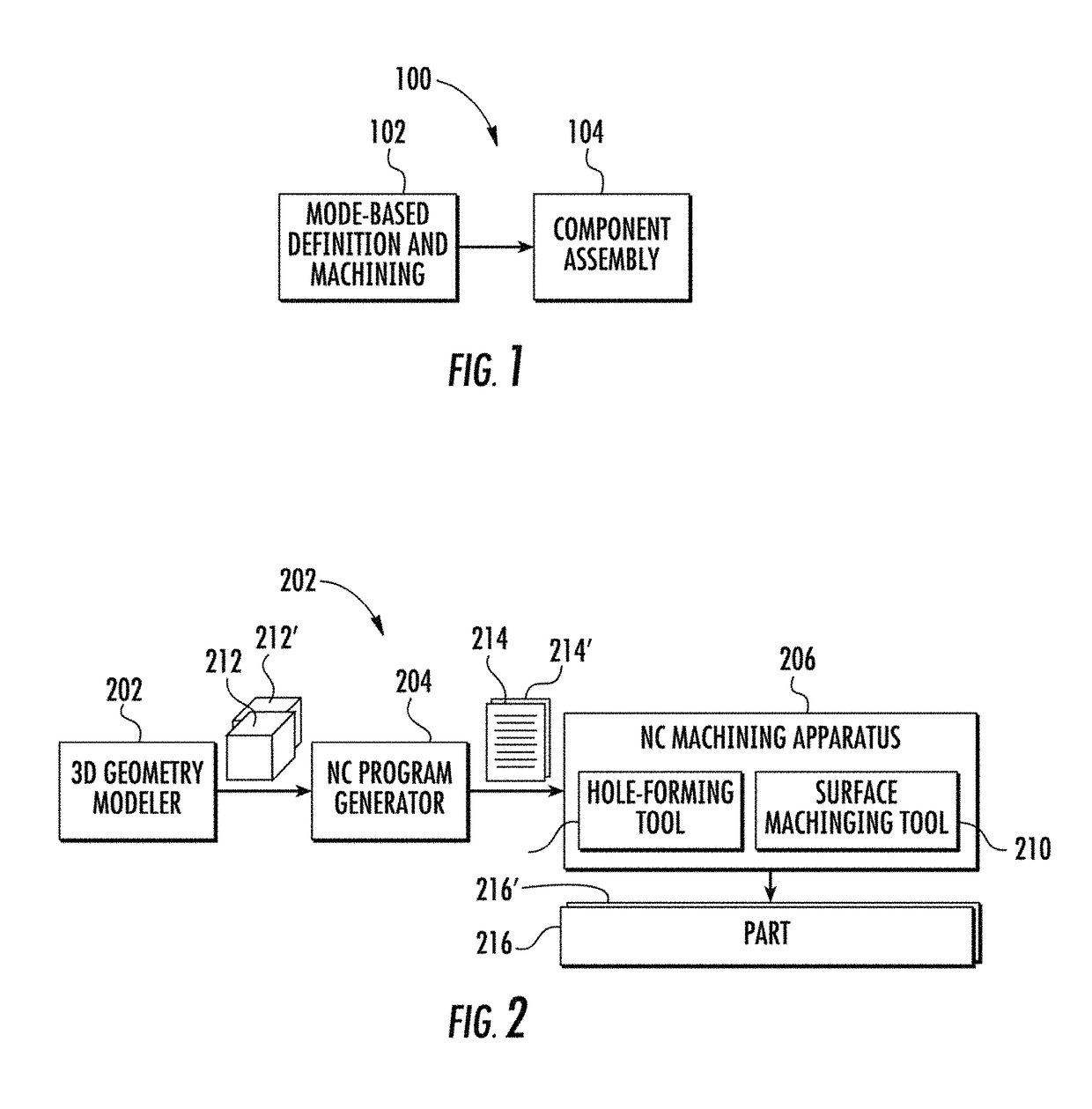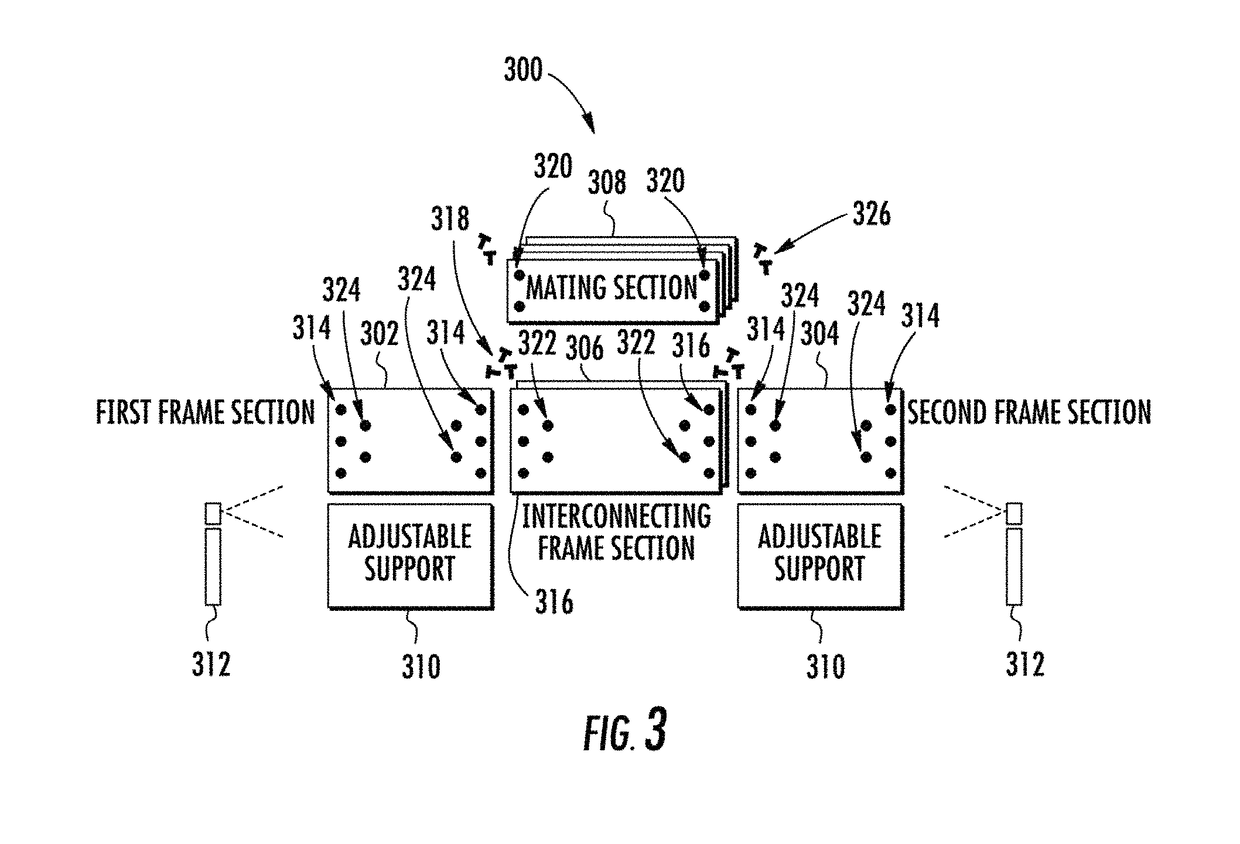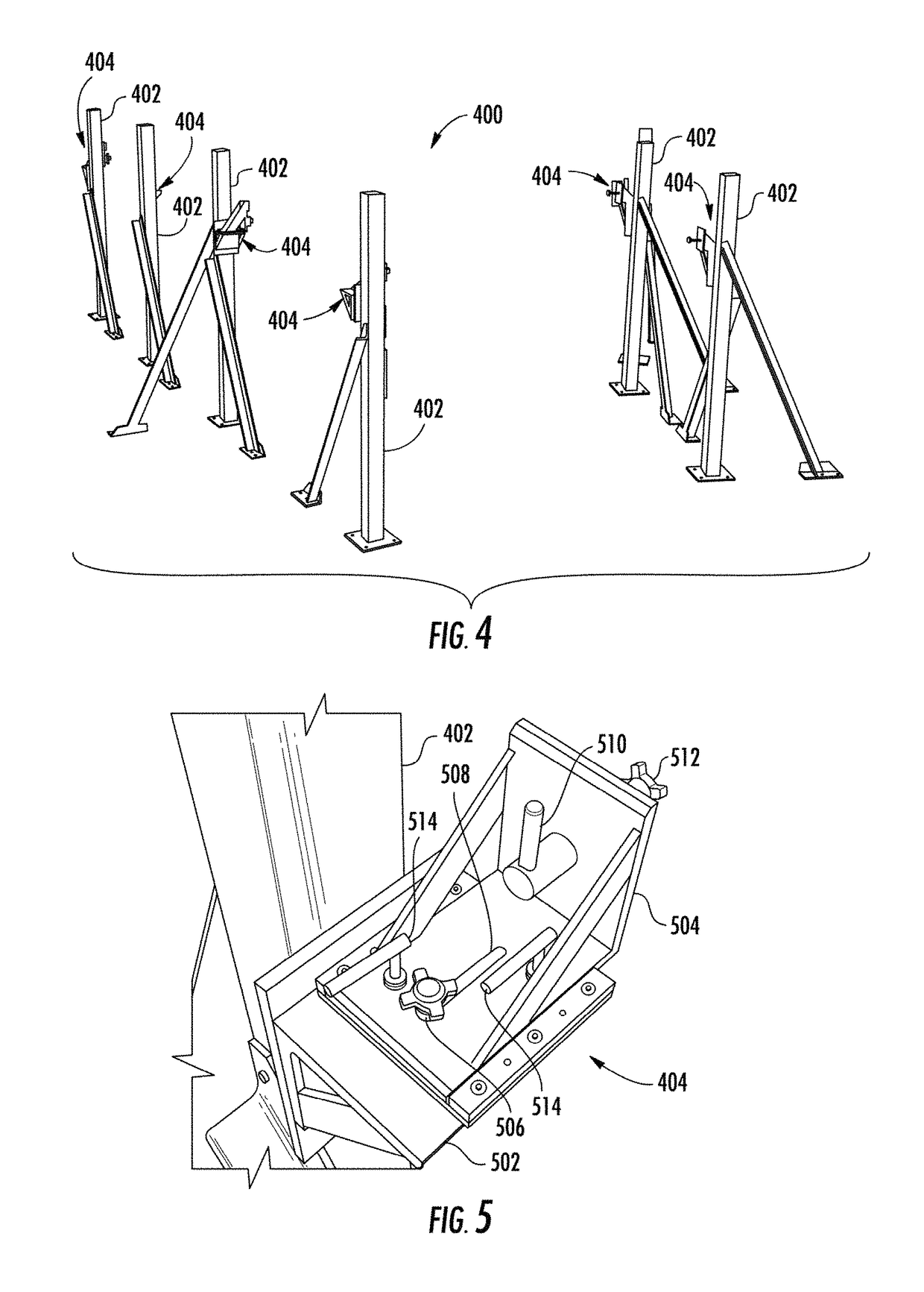Model-based definition for machining aircraft parts
a technology for aircraft parts and model-based definitions, applied in the field of aircraft part machining and assembly, can solve the problems of large amount of effort, interference with the hole alignment of the mating component, and the complexity of the design and development of complex 3d geometry models of many modern aircraft component parts, so as to reduce the cost of assembling aircraft structure assemblies, reduce assembly time, and facilitate assembly
- Summary
- Abstract
- Description
- Claims
- Application Information
AI Technical Summary
Benefits of technology
Problems solved by technology
Method used
Image
Examples
Embodiment Construction
[0049]Some implementations of the present disclosure will now be described more fully hereinafter with reference to the accompanying drawings, in which some, but not all implementations of the disclosure are shown. Indeed, various implementations of the disclosure may be embodied in many different forms and should not be construed as limited to the implementations set forth herein; rather, these example implementations are provided so that this disclosure will be thorough and complete, and will fully convey the scope of the disclosure to those skilled in the art. Like reference numerals refer to like elements throughout.
[0050]Example implementations of the present disclosure are generally directed to aircraft part machining and assembly and, in particular, to model-based definition for machining aircraft parts, and assembly of parts without use of any shimming, locating fixtures or final-hole-size drill jigs. FIG. 1 illustrates a system 100 according to example implementations of th...
PUM
 Login to View More
Login to View More Abstract
Description
Claims
Application Information
 Login to View More
Login to View More - R&D
- Intellectual Property
- Life Sciences
- Materials
- Tech Scout
- Unparalleled Data Quality
- Higher Quality Content
- 60% Fewer Hallucinations
Browse by: Latest US Patents, China's latest patents, Technical Efficacy Thesaurus, Application Domain, Technology Topic, Popular Technical Reports.
© 2025 PatSnap. All rights reserved.Legal|Privacy policy|Modern Slavery Act Transparency Statement|Sitemap|About US| Contact US: help@patsnap.com



